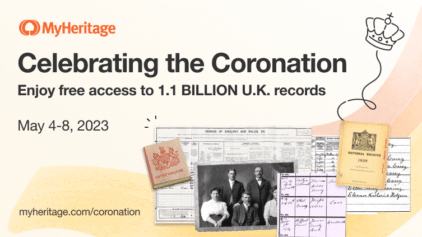“You would never eat neither meat, no fish without bread”, – my great grandfather wrote at 1913 as if this is a normal for everybody. But I shouldn’t say the same thing about myself.


How much do you know about the lives that your ancestors lived?
Many of us know their names and, if we are lucky, we have dates, professions and stories about our distant ancestors. However, many questions still remain. There are some essential day-to-day activities of our ancestors that we may know little or nothing about.
Take sleep, for example. We can assume that our grandparents sleeping patterns were similar to ours. But what about our grandparents’ grandparents, and our grandparents’ grandparents’ grandparents?
According to a recent article in Slumberwise, our ancestors slept very differently from how we sleep today. According to research, in the early 20th century, it was less common to have one long nighttime sleep, and most people had two nighttime sleeps.
Roger Ekirch, professor of history at Virginia Tech, was the first to discover that people used to sleep in two large chunks.
In his research, he found that over a 12-hour period, people would sleep for 3-4 hours, wake for a couple of hours, and then sleep again until morning. His research stems from literature, court documents, personal papers and more, and appears to be the accepted sleep pattern until the early 1900s.
“It’s not just the number of references – it is the way they refer to it, as if it was common knowledge,” says Ekirch.
Among many examples backing up this theory is Chaucer, who describes a character’s first and second sleeps in Canterbury Tales. Another example is an English doctor who wrote that the ideal time for study and contemplation was between “first sleep” and “second sleep.”
Being very religious, most would use the time to pray or reflect, to read or to interact with family. Religious manuals included special prayers to say in the mid-sleep hours.
If this was the common practice, why don’t we still sleep in two shifts? When did this change?
Ekirch believes that this practice died out shortly after the turn of the 20th century, after the invention of street lights and later electric indoor lighting. When street lights became more prevalent, spending time at night became less dangerous, and the streets at nights were no longer dominated by criminals. People began socializing or working into the night, and the concept of two sleeps disappeared.
What surprising things have you discovered about how your ancestors lived? Share your comments below.











Lynn Cremona
October 5, 2014
According to Rubin Naiman, Clinical Assistant Professor Of Medicine; Program In Integrative Medicine, University Of Arizona and Clinical Coordinator, Sleep & Dream Psychology, night watching has had a different meaning in past times than that which we assign to it today.
Waking midway through our sleep cycle is a natural occurrence in those with healthy sleep patterns. In pre-industrial times, night waking was just that: waking at night. Night watching was considered a common occurrence. In these pre-industrial times, people were known to wake up, eat meals, even go outside, or fraternize with neighbors.
An article in US News and World Report states,
“References as far back as Virgil and Homer called it “first sleep” and “second sleep.”
In between was an hour or two of quiet wakefulness that our ancestors sometimes called “the watch.” It was a time to ponder dreams and plot wars.”
more on Ekrich:
A. Roger Ekirch discovered that most Western Europeans between 500 and 200 years ago slept in a two-phase sleep pattern. In the pre-industrial times, when light was not artificially reproduced, sleep was segmented into first sleep and a second period of sleep. In between was a “watching period”, commonly a 1-2 hour segment in the middle of the night.
During this time, halfway through the night, it was common to wake for an hour or more of talking, smoking, or even visiting with neighbors. “Some stayed in bed to meditate, pray, or reflect on dreams from their “first sleep” of the night; and dreams often guided their lives.”
Ekirch believes that continuous sleep may be caused by exposure to artificial light, and a “segmented sleep” may be more a natural condition. Studies conducted by Thomas Wehr at the National Institute of Mental Health came to a similar conclusion. Ekirch believes in the value of segmented sleep and night watching, as “an ancient path to our psyche,”
Night watching sleep may instead be “a re-creation of the older sleep-wake-sleep pattern.”